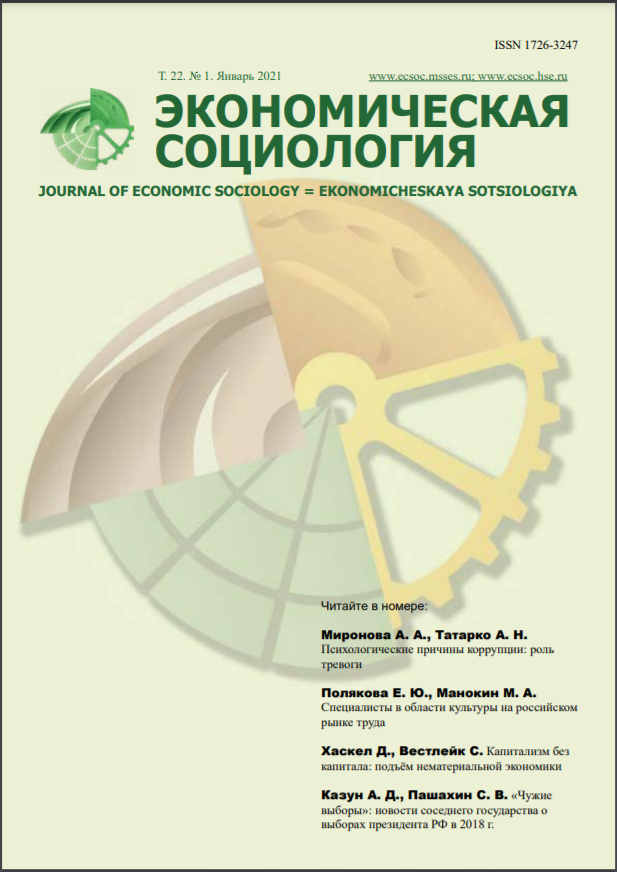Cultural Professions in Modern-Day Russia: Statistical Portrait of the Workers
Abstract
In this study, we aim to provide a statistical portrait of employment in the cultural field with regard to occupations on the Russian labor market. The data from the ‘Comprehensive Monitoring of Living Conditions’ are used to illustrate the main differences in the socio-demographic and occupational characteristics of culturally employed respondents and other professional groups. Additionally, the most relevant factors that may have an impact on individuals’ probability to be cultural workers are analyzed. Our study is based on the theoretical frameworks of U. Beck, R. Florida, J. Urry, and Z. Bauman. We also consider the possible Soviet legacy of the contemporary Russian culture, which may interconnect with labor conditions in this field, using S. Fitzpatrick’s works. We also provide an overview of other relevant studies. Our findings show that a larger number of cultural workers among the respondents are librarians, archivists, teachers of music and art schools, linguists, museum workers, journalists, and writers. The results on the statistical portrait display that on average, the cultural workers are highly educated married women in their forties or older who live predominantly in the largest regions of the Russian Federation (Moscow and Moscow region, St. Petersburg). Almost three-quarters of the group have relevant education. They are mostly regular full-time employees with a daytime work schedule. We have also found that the most influential factors for becoming cultural workers are the region of residence and relevant professional education.













